"Culture of battle axes"
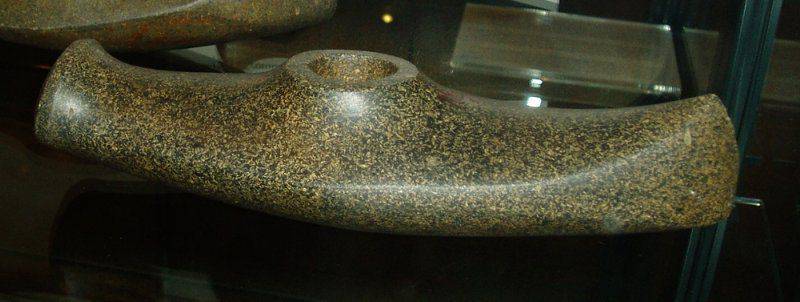
Scaphoid stone ax from Finland.
Let us turn to the archaeological finds of a turning point, from the Stone Age to the Age of Metals, and we learn that in the territories of Central and Eastern Europe in the period 3200 BC. O. / 2300 BC. er - 2300 BC. O. / 1800 BC er there was a "culture of battle axes." However, she also has a more peaceful name - “culture of corded stoneware”, which is associated with the characteristic ornament on her vessels.
It is believed that it covered a significant part of continental Europe, except for those countries of the western Atlantic and Mediterranean region, where ancient pre-Indo-European peoples (Ligurians, Iberians, etc., and the ancestors of the current Basques) lived, and the northern Scandinavia, where the Saami ancestors settled.
The main cultures of the copper age of Europe.
The name of the culture arose because of stone battle axes found in men's burials. Although someone prefers the name “string ceramics” and the culture of “single graves”, which is associated with the characteristic ornament on ceramics and the burial rite.
A number of scientists associate the origin of all the “battle ax cultures” (and there are several of them known in different regions) with the catacomb culture (burials in the catacombs) of the southern European part of Eastern Europe. Others derive the culture of battle axes from the earlier pit culture (burial in the pits). It is believed that in the west it became the heir to an earlier culture of funnel-shaped cups, but on the territory of the modern Baltic and Kaliningrad region, the culture of corded stoneware is most likely an alien culture. In the east, it was a completely new culture, with earlier local cultures not related.
Stone axes of catacomb culture.
Representatives of this culture lived in very small settlements, kept cattle and engaged in agriculture. It is possible that they led a semi-nomadic way of life - when the fields were exhausted - they moved on. Wheeled transport was used for the migrations - oxen harnessed to carts, short horses were used by riders, but their main pet was obviously a pig!
They buried their dead in shallow graves (about 1 meters), and the men in them lay curled up on the right side, and the women lay on the left. And all facing south. Burials were often located in rows, but in the graves of men there is always a stone battle ax! At the same time, there was a culture of bell-shaped cups and it had similar funerary rites, and these two cultures then occupied most of the territory of Western and Central Europe. As for the anthropological type, the representatives of this culture had long and narrow skulls with a high forehead and arch, so that they can be easily distinguished from all others.
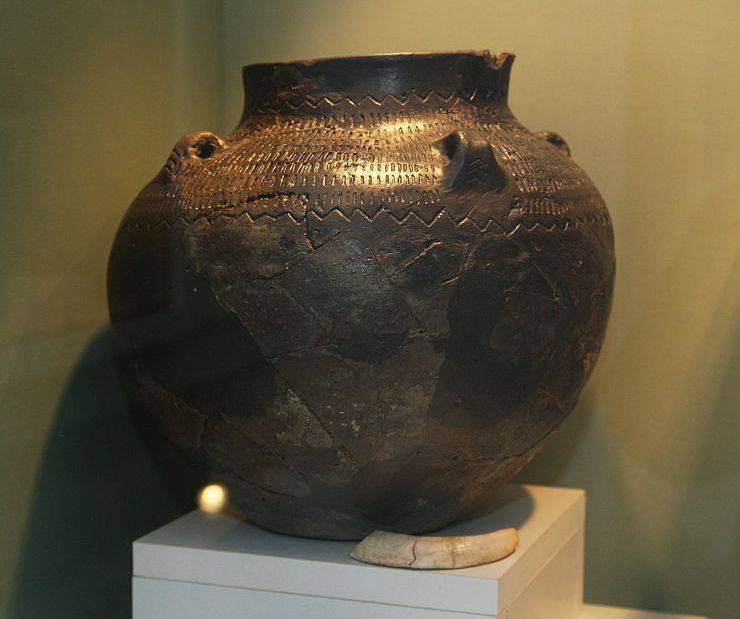
Typical spherical amphora from excavations in Piatra-Neamt.
Most likely, this culture should be considered as one of a number of Indo-European cultures. And at one time it was believed that this is the protoculture of all European Indo-Europeans in general. But now the “culture of battle axes” is considered one of the major branches of the ancient peoples of Europe - the Proto-Balto-Slavs in the east and the Proto-Germans, the Protokelts, and the Proto-Italians in the west. Well, the presence in the graves of battle axes indicates their militancy. It is obvious that life then was such that those people could not live without a stone battle ax!
Since there were quite a few regional cultures of “battle axes” that had their own characteristics, it makes sense at least to get acquainted with each of them in general terms.
Let us begin with the Swedish-Norwegian, the most northern, settlements of which are known even beyond the Arctic Circle and which even has its own name: “the culture of navicular axes”. In Scandinavia, they found about 3000 axes of this culture, and the time of its distribution was called the “period of fragmented skulls”. This indicates that the relocation of narrow-faced aliens with battle axes to the area clearly had the character of an invasion, and that they were clearly using them skillfully!
The Finnish "battle-ax culture" was a culture of hunters who lived in the forests. There are very few finds made during the excavation of settlements in this area. In Central Europe, the main type of finds is ceramics decorated with rope prints, and the dishes are found both in the graves of women and in the graves of men.
In the east, Middle Dnieper culture and Fatyanovo culture in the upper reaches of the Volga are known. Some of the researchers distinguish Balan culture, which belongs to the eastern variant Fatyanovskaya. There are few traces left from the Middle Dnieper culture, although it occupied a convenient path from the steppes to Central and Northern Europe. As its name implies, it was located along the Dnieper and its tributaries in the area between Smolensk and Kiev. By the time it coincides with the catacomb culture in the Northern Black Sea region.
Well, now that became a kind of "calling card" of the tribes of this culture - stone drilled battle axes! Their finds are found throughout the resettlement of these tribes everywhere. But they are different! According to the classification, for example, D.A. Kraynova, only the main types of axes characteristic of Fatyanovo culture can be counted as sixteen, and nine for the Middle Dnieper culture. And there are from three to five subtypes, so for a layman, all these axes are a headache.
Typical ax cleaver. Local History Museum of Pyatigorsk.
Anyway, the earliest form of this weapons was the ax cleaver. Such axes are found in Kursk, Orel, and Belgorod, and Lipetsk regions. These axes could successfully chop down trees and smash skulls. However, later, in the second quarter of the 2nd millennium BC. The main type of ax has become an ax hammer with an elongated butt. Then in the Upper Volga region appeared axes in the form of a blade - very beautiful and elegant stone products. They are found in the Kostroma, Yaroslavl and Tver regions, but over time the shape of the axes becomes more and more simple and there is no beauty in them anymore. Why? Apparently, with the transition to a more peaceful life, since there are more labor tools in the burials than weapons. Well, and then copper was replaced by a stone here, although outwardly the first copper axes were still very similar to stone ones. True, on the territory of the former USSR such axes were found only around 30, which clearly indicates that it was a rarity.
Brass lances are even more rare. Only five finds are known, of which three belong to the Fatyanovka culture, and two to the Middle Dnieper. Typically, these tips are forged, have a sleeve with holes for nails and ornament.

Fatyanovo culture in Eastern Europe.
Then there are flint tips of darts and arrows, which do not differ in variety. For the most part, they have a scape and two allotted to the side of the spike, so that the injuries inflicted by them could be very serious. Most likely, these tips served for military arrows, but such finds are mainly characteristic of the Moscow-Klyazma and Oka-Desna groups of burials. It is possible that this is due to the rise of military art in Fatyanovtsy, who began to neglect hand-to-hand combat, and rely more on bows and arrows. By the way, Fatyanovtsy buried their dead also in a crouched position, men, as a rule, on the right side, but with their heads to the west, and women on the left and with their heads to the east!
Mace from the museum of local lore in the city of Pyatigorsk.
Very rarely find the so-called "throwing stones." These are stone balls of small size and very well polished. It is possible that these are stones for sling, but something too thoroughly processed. In a forest area, such stones could most likely be used as a top for the so-called “flexible club” - a very popular weapon of the Dakota Indians. The stone was wrapped in leather and attached to a wooden handle in such a way that the connection was not rigid. The blow with such a weapon on the head (even through a fur hat) wore, of course, a crushing character.
Well, stone axes were drilled with the help of an articulated stationary drill, which is why they could not appear either before the bow appeared. Either a wooden rod was used as a drill (quartz sand served as the working medium) or a hollow bone put on a stick. There were a lot of sticks and bones, and even more sand! One "sawed" the ax with a bow, and his assistant, or assistants, were engaged in preparing him for "drills". So, literally on the “stream”, these axes were created, although after roughing they needed to be ground, polished and polished for a long time!
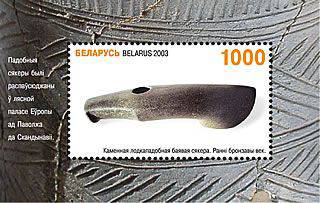
Early Bronze Age Naval Polished Stone Battle Ax from the National Museum stories and the culture of Belarus. Postage stamp of the Republic of Belarus.
And finally, as regards attempts to politicize ancient history in present-day Ukraine and attribute to it the achievements that the cultures that existed on its territory did not possess. Everything was just like everyone else. Yes, it could not be otherwise, and the findings of archaeologists clearly confirm this!

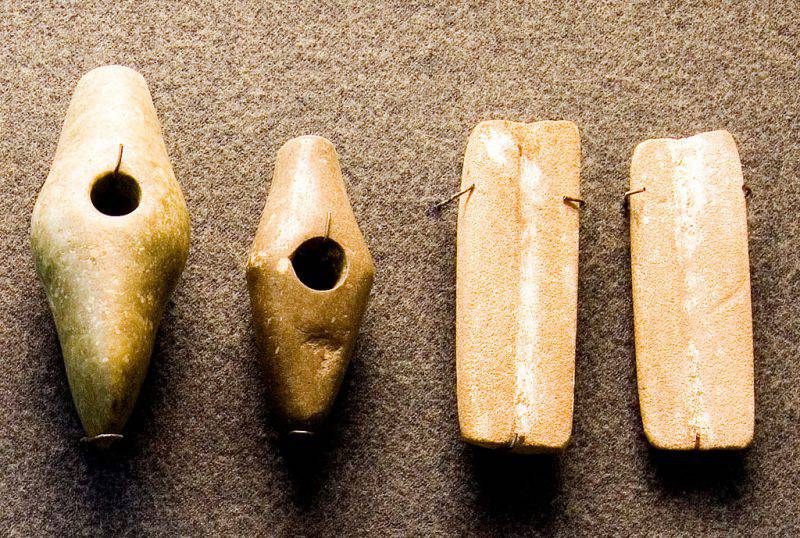
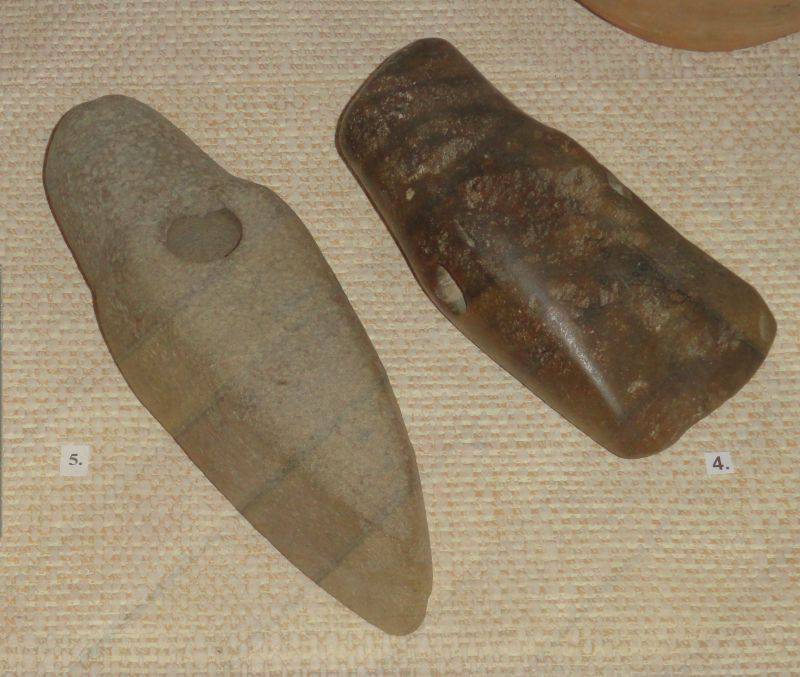
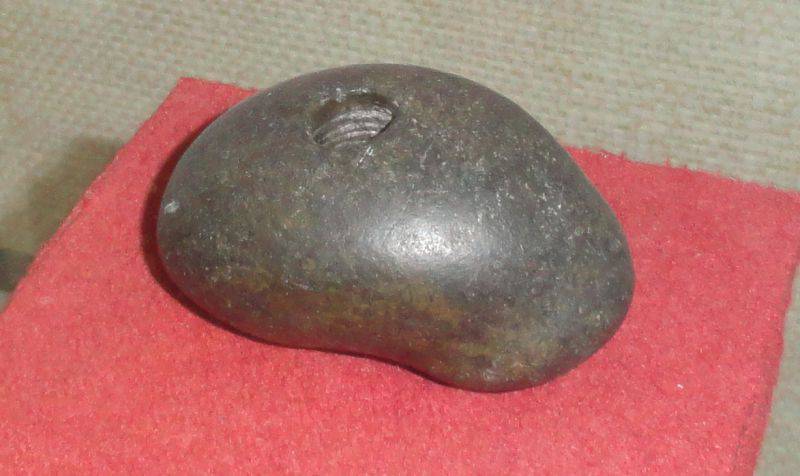
Information